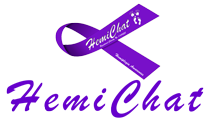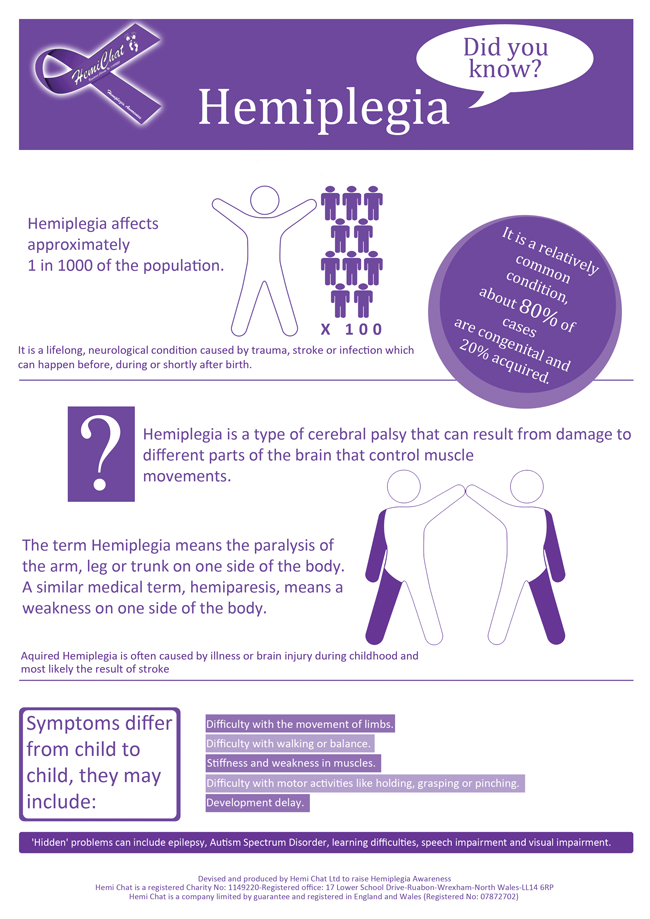Hemiplegia is a type of cerebral palsy that can result from damage to different parts of the brain that control muscle movements. The term hemiplegia means the paralysis of one side of the body. A similar medical term, hemiparesis, means a weakness on one side of the body. In children with hemiplegia, the paralysis in the body occurs on the side opposite to the section of affected brain. The symptoms of spastic hemiplegic cerebral palsy may differ from child to child.
Some of the symptoms include:
• Difficulty with common motor skills such as writing or using scissors
• Difficulty with walking or keeping one’s balance
• Stiffness and weakness in muscles on one particular side of the body
• Seizures
• Delay in reaching expected developmental milestones such as rolling over, sitting up, crawling, or smiling
While many people think that Hemiplegia is a progressive condition, it is not – nor is it a disease. As children grow and experience growth spurts they may have more problems with muscle spasticity. However, this does not mean that the initial injury has gotten any worse. Children with Hemiplegia cannot be cured in the common sense of the word, but therapies can do wonders to help some of the symptoms. Medication can also be prescribed for seizures, and orthotics, braces and splints can be used to help with spasticity problems and walking.
Causes of Hemiplegia in children:
• Cerebrovascular Accident (CVA) or stroke thrombosis: embolism or haemorrhage.
• Transient ischemic attack (TIA)
• Migraine syndrome
• Head Trauma: brain contusion, subdural haematoma or epidural haematoma
• Sturge-Weber Syndrome
• Todd’s Paralysis
• Brain tumor (Primary or metastatic disease)
• Infection: brain abscess, encephalitis, subdural empyema or meningitis
• Nonketotic hyperosmolar coma
• Vasculitis.
• Demyelinating disease: multiple sclerosis, acute necrotising myelitis
• Hereditary disease: leukodystrophies
• Congenital or perinatal injury
• Arteriovenous malformations





